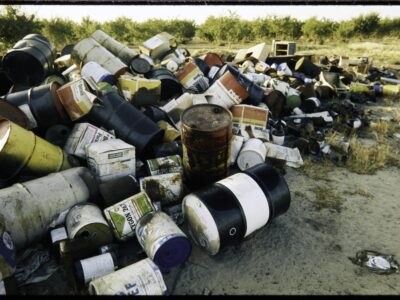Bowing to the Inevitable
The Supreme Court declared open season on the nation’s streams and wetlands. New regs are the result.
On August 25, EPA and the Army Corps of Engineers (“the agencies”) issued a joint rule, which modifies their previous rule on federal jurisdiction under the Clean Water Act in order to conform with the Supreme Court’s Sackett decision. Sackett was a deeply misguided and harmful ruling — but it is nevertheless the law. The agencies’ new rule attempts to sync their existing approach with the Sackett decision while doing no more damage than necessary to the environment.
The new rule does not change federal jurisdiction over navigable or interstate waters. Navigable is still defined fairly broadly, to include waters that are “currently used, or were used in the past, or may be susceptible to use in interstate or foreign commerce, including all waters which are subject to the ebb and flow of the tide.”
Consistent with Sackett, the new regulation drastically limits the types of streams, lakes, and wetlands subject to federal jurisdiction:
- Federal jurisdiction cannot be based solely on the significance of the hydrological connection between a wetland or stream and a navigable/interstate waterway.
- Wetlands that straddle state lines are no longer covered.
- Tributaries of interstate/navigable waters are covered only if they are “relatively permanent, standing or continuously flowing bodies of water.”
- A wetland is covered only if it has a “continuous surface connection” with an interstate/navigable water or its tributaries.
- Intrastate lakes and ponds are also covered only if they are “relatively permanent, standing or continuously flowing bodies of water with a continuous surface connection” to navigable/interstate waters.
Notably, the revised regulation does not attempt to define key terms used by the Supreme Court such as “continuous surface connection” or “relatively permanent.” (The latter term is most important in the West, where many water bodies dry up at times.) Instead, it leaves the application of these terms to the discretion of the lower-level officials in charge of enforcing the Clean Water Act, who hopefully do what they can to apply these terms in a way that minimizes environmental destruction.
In Sackett, the Supreme Court faced a choice. It could uphold a scientifically sound approach to achieving the goals of the Clean Water Act, thereby preventing water pollution, preserving key ecological systems, and mitigating flood risks. Or it could consult its favorite dictionaries (here, Webster’s 2nd and a couple of others chosen at random), and revert to archaic conceptions of federal authority. Sadly but predictably, the Court chose the second option.
As I’ve discussed in an earlier post, I do think there are some other available mechanisms to limit the damage. But in terms of defining federal jurisdiction under the Clean Water Act, the agencies didn’t have much choice. Hopefully, this will at least temporarily slake the desire of conservatives to trash our nation’s wetlands and streams in the name of property rights.
Congressional Republicans are apparently talking about using the Congressional Review Act block this new regulation because they think it doesn’t do enough to conform to the Court’s ruling. Apart from the fact that Biden would inevitably veto this effort, it’s a particularly misguided idea. The regulation simply amends parts of a previous rule to make it conform to the Supreme Court’s decision. If Congress were to overturn the regulation, the Congressional Review Act prohibits the agencies from ever doing the same thing again. In other words, they would never be allowed to bring those parts of the earlier rule into conformity with the Court’s decision. For those who agree with the Court, that would be a crazy outcome.
Reader Comments
One Reply to “Bowing to the Inevitable”
Comments are closed.







Those who decide to limit, and therefore allow the destruction of, what constitutes a wetland, might want to reconsider their decision, particularly given the impacts of climate change.